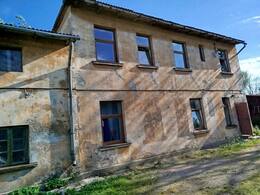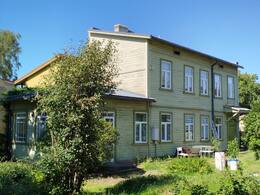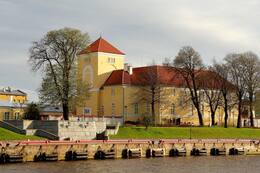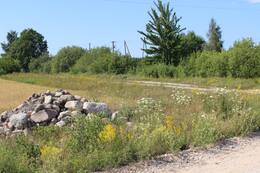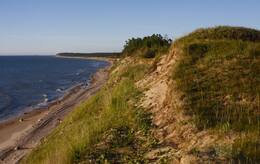Valentina Lasmane's successful escape
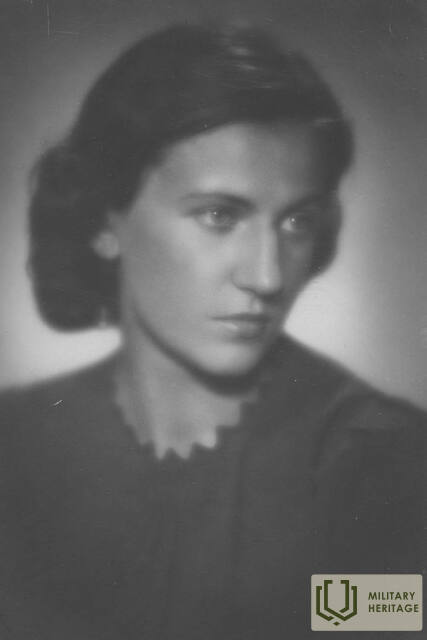
A biographical story written by Valentīne Lasmane about how she managed to escape from detention during the German occupation
“The news came that I was going to be arrested. And then Ģinters told me: “Valentīns, you have to get out. You can bring us down if you get arrested”. Ah, now I started thinking. Ģinters had some guys watch my apartment on Lauku Street. The apartment was in a second house in the yard. The first house was on the street, then there was a yard, then the second house. The house had a little garden in front of it. Some people were on duty in that garden. One evening, when I got home, I ordered potatoes to be baked in the oven. And suddenly Frišenfelds runs in and says: “Take your things!” And I grab my bag, and he drags me across the room, pushes the window open, me out the window, and himself – bang! – outside. And there in those bushes there was a motorcycle stuck inside. Then he got on top of the motorcycle and dragged me out.”
We didn't go to Sweden to become Swedes / Zin. ed. B. Bela. Riga: Zinātne, 2010, p. 208.
Related timeline
Related topics
Related objects
The building in Ventspils where LCP liaison Valentine Jaunzeme (Lasmane) lived in 1944
The house at Lauku Street 4, Ventspils, was home to the teacher Valentīne Lasmane (nee Jaunzeme) (1916–2018). She was a liaison officer for the Latvian Communist Party and a member of the Ventspils liaison group. After World War II, she lived in Sweden.
She compiled the testimonies of 130 boat refugees in the publication “Across the Sea 1944/1945” (Stockholm, 1990), but V. Lasmane's own life story can be read in the book “Night is No Longer Just for Sleeping” (Riga, 2020). In 2000, she was awarded the Order of the Three Stars. She died at the age of 102 in 2018 in the Stockholm suburb of Täby.
The Mazirbe coast, from where refugee boat traffic to Sweden took place in 1944
The Mazirbe coast was an important place during World War II, from where refugee boat traffic to Sweden took place in 1944.
Memories of boat refugee Ilona Cīrule (nee Mālītis): “I was 13 years old at the time. I remember that at the end of September we traveled in a caravan from Riga to Mazirbe for a whole week. The trip remains in my memory as something unpleasant: the Russian candles in the sky worried me to the core. We lived in Mazirbe for about three weeks, and every day I heard talk about crossing over and about looking for boats. Finally, on October 21, we had to get ready. [..] There were about 90 of us on the boat. I sat on my father’s lap on the deck. The small children with their mothers were below, and they were short of air. I must have been dozing, but in the morning of the next day a plane was spotted and a ship on the horizon. Then the people became quiet. In the afternoon, the ship came again, and this time it came right at us. But it happened like in a fairy tale: it was a Swedish military ship! They pulled us all onto the ship, gave us warm cocoa and took us to the port of Nynashamn. Our boat was tied to the ship and its owner Zariņš-Petravs received it safe and sound. Among the guests were Šici, Zanderi, Vanagi, the former Minister of Justice Mrs. Apsīša, our family and others. I know that the boat had to be paid in gold. But how much - I don't know.
The building in Ventspils where Dr. Valdemārs Ģinters, a representative of the Latvian Communist Party and organizer of refugee boat traffic in Kurzeme, lived in 1944-1945.
The house at Katrīnes Street 4, Ventspils, where archaeologist Valdemārs Ģinters worked.
From October 1944 to May 8, 1945, the LCP representative in Kurzeme was archaeologist Valdemārs Ģinters (nicknames “Doctor”, “Gardener”) (1899–1979). Participant in the Latvian War of Independence, director of the State Historical Museum and docent at the University of Latvia. Awarded the Lāčplēsis War Order and the Three Star Order. One of the signatories of the LCP memorandum of March 17, 1944. After World War II, he lived in Sweden. From 1949 to 1979, he was chairman of the board of the Latvian National Foundation.
Prison in the Livonian Order Castle during World War II
Several members of the LCP Ventspils communications group and refugee boat operators were detained in the prison established in the Livonian Order Castle in 1944-1945.
Memories of the boatman Žanis Fonzovs: “Two boats left Sweden - “Krīvs” and “Zvejnieks”. I was on “Zvejnieks”, and the crew included Saulīte and Grunti. [..] The weather was beautiful, I was sailing so inconspicuously, not very high. I immediately saw - I was in Morse code. The boat was approaching. I went down to the engine room, because in addition to Saulīte's papers, I also had letters from the arrivals to relatives in Latvia and the collected weapons in a bag. I threw the letters and papers into that bag of weapons and everything overboard.. What then! The boat approached ours and the Germans asked for our driving permits. [..] So on October 21, the Germans took us with the entire “Zvejnieks” to Ventspils. They took us to prison. There were about 30 people in the room. I had a sheepskin coat on my back, I put it on the floor and put it on myself, but I had not slept last night. On the second or third day, they called us out for questioning. We had agreed to say that we were refugees on our way to Germany. I had just wanted to go to Lielirbe to follow my friend. It seems that they believed us then. [..] But then the situation in Ventspils changed: the city was taken over by the military administration, and we were called in for questioning a second time. It was worse, because they showed us a box of Swedish matches and a piece of kroon that were allegedly found on the boat. One of the interrogators was a Latvian, and he even beheaded us for telling the whole truth. We saw that the fairy tale had ended, we simply had to confess.
The road to the "Grīnieki" house in Vārve parish
The road to the “Grīnieki” houses in Vārve parish, where in 1944 one of the main settlements for boat refugees on the Kurzeme coast was located.
Memories of boatman V. Jurjakas: “Entering the “Grīnieki” yard, everything looks very normal. A quiet country house, not a soul, probably people in the sun. [..] It turned out that not only the “Grīnieki” residential house was full of people, but all the buildings were full. The barn, the granary, the hayloft and the bathhouse. I met one or two acquaintances, because it was time to leave our land. [..] The nutritional situation was not critical, but quite poor. [..] In the evening, the refugee caravan began to move towards the seashore. I warned everyone in advance not to come out of the bushes by the seashore, because there were coast guard dugouts and observation posts nearby. It was a large caravan, because about 200 people were going to the seashore. There was no hope that everyone would arrive on time. The evening was not very dark, and I was able to review the activities of the entire group. The most striking were the large "When people lived in "Grīnieki", they didn't see them, but now, when they were brought into the light, they only saw this. The goods alone required a whole boat. 3-4 two-horse carts were loaded with goods, followed by people. [..] We waited for the boat for a long time, but it didn't come. The whole caravan had to turn back. It was very dark."
Temporary refugee shelters "Vārves būda"
"Vārves būdas", a place in Ventspils municipality that served as temporary housing for Latvian refugees who were waiting for boats from Gotland to arrive in 1944.
Memories of the boatman V. Jurjaks:
“My half-brother and his family had come to us from Riga, and when the news came that a boat was expected at Vārve, I united these people of mine with the group of police chief Jasūnas and we all set out for Vārve. We waited for the signals until late at night, but the boat did not arrive. We waited there like that for a whole week. It started to rain. People made tents out of sheets, so we called this place “Vārve huts”. My wife and I spent more time in Ventspils during the day, and eventually we had to think about how to deliver food to those waiting. I remember one night my wife and I were carrying hot boiled potatoes through the forest for them on our bicycles. It was raining heavily, lightning was roaring, and the warm potatoes tasted good to the waiting people who had spilled out. The Vārve forester had accidentally discovered this hiding place, but - promising him the possibility of a transfer, he came to help. The Germans had begun to go through the houses of the coastal residents, looking for people in the years of conscription. Two young people had been caught in the forest near the “Vārve huts”. Therefore, this place could no longer be safe for these more than fifty people who were languishing here.





